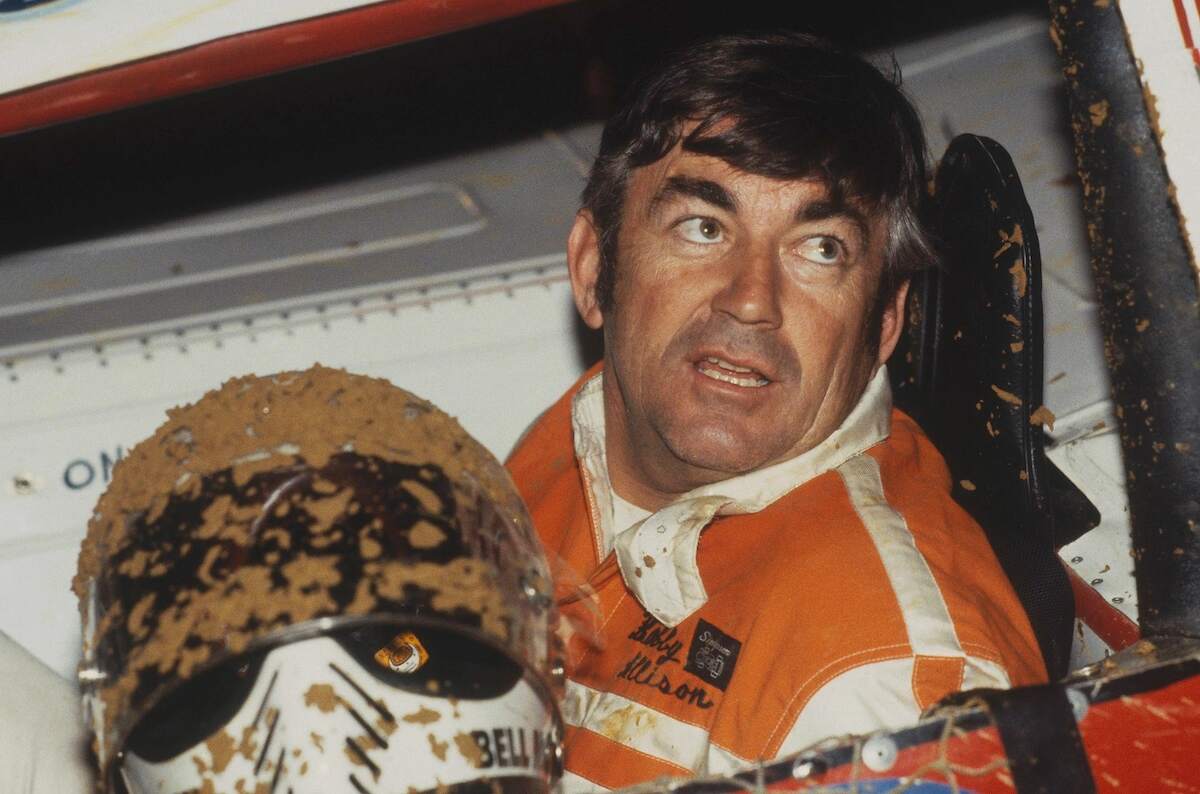NASCAR
Bobby Allison’s Funny Business in the Daytona 500 Didn’t Leave His NASCAR Rivals Laughing

Even by superspeedway standards, the attrition rate at the 1982 Daytona 500 was high. Dale Earnhardt Sr. was done not much more than half an hour into the day due to mechanical problems, and a wreck took Richard Petty out barely halfway through the race. On a day when 25 cars didn’t finish, Bobby Allison converted a suspicious accident into victory in the biggest NASCAR race.
Allison’s minor fender-bender with Cale Yarborough damaged his car in a way that was both dubious and advantageous. Racing rivals have suspected for decades that he cheated his way to a Daytona 500 victory.
Bobby Allison dominated the 1982 Daytona 500
The 1981 NASCAR Cup Series points competition was a two-man race between Darrell Waltrip and Bobby Allison. Richard Petty, who won the Daytona 500 that year, had scored three wins, but it was Waltrip (12 victories) and Allison (five) who were taking the most checkered flags and piling up top-five finishes. Waltrip won the championship and came to Daytona the following year, poised to get off to a flying start.
However, Waltrip experienced engine trouble that took him out of the running, and he would have to wait until 1989 to become a Daytona 500 winner. By the time he rolled to the garage on lap 151, however, the outcome had been all but decided. Allison started running away from the field early, and no one could stay close.
Allison finished half a lap clear of runner-up Cale Yarborough. Joe Ruttman’s Buick was the only other car on the lead lap when the race concluded, and just one driver finished one lap down.
It didn’t take long after the checkered flag for rival drivers and crew chiefs to offer their theories on how Allison was able to dominate.
The 1982 Daytona 500 was a race of attrition
Superspeedways like those at Daytona and Talladega have a way of chewing up cars. If “The Big One” doesn’t send half a dozen cars to the garage, then five or six minor wrecks have a way of winnowing the field. On top of that, engine failures are more prevalent as drivers push their cars over 200 mph on the big straightaways for longer durations.
In the case of the 1982 Daytona 500, the attrition was worse than usual. Ten cars dropped out with engine problems in the first 75 laps. A crash just past the midway point took out seven-time champion Richard Petty and three other racers.
By the time that Bobby Allison crossed the finish line for the second of three career NASCAR Daytona 500 victories, only 17 of the 42 cars were running. The irony is that Allison had the day’s first mishap. In fact, the seemingly innocuous incident on lap 4 helped him for the rest of the race.
Allison had just passed Yarborough’s Buick and pulled in front of him too soon. Their cars touched, and Allison’s rear bumper flew off and bounced around, creating havoc that took out three cars in the pack.
The Washington Post reported that Yarborough was immediately suspicious:
“He ran all over me, like it was the last lap of the race. He got under me and carried me straight up into the wall. … It didn’t take much of a lick to knock that bumper off, did it? It came off from barely touching me, and it shouldn’t have.”
Cale Yarborough
The ‘accident’ benefited Bobby Allison
When is the Daytona 500 not a fair race? According to Cale Yarborough’s crew chief, the answer is when one car sheds its rear bumper too easily. Aside from reducing weight, losing a rear bumper on the monstrosities that NASCAR teams fielded in 1982 had the potential to improve speed and gas mileage by changing the aerodynamics of the car.
“That bumper should have withstood a helluva lot more shock than that,” said Tim Brewer, Yarborough’s crew chief. “A little tap and it goes? It’s awful funny it came off with no more impact than that. … You take the rear bumper off a car, and it picks up more speed.”
The gas mileage also improved. Despite running alone much of the time, which is not conducive to fuel efficiency, Bobby Allison squeezed at least two or three more laps out of his final tank of gas than the other leaders did.
The irony of the subsequent complaints was that Allison’s team had probably gone to school on some curious issues that the Yarborough team had experienced in the past.
“All I know is that when Tim was with Cale, they won at Dover with the rear bumper off the race car,” Allison said. “And I think, they won at Talladega with the bumper off the race car, and neither time did I feel they left the pits with the intention of the bumper falling off.”
Like Sportscasting on Facebook. Follow us on Twitter @sportscasting19.











